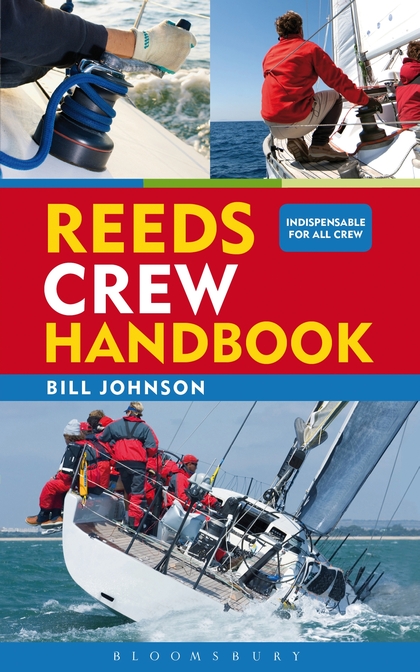Reeds Crew Handbook
Yacht Crew – the skills and knowledge you need
It was quite an honour to be asked to write a Reeds Handbook. It was fun to write, and very satisfying to think that it will help to introduce inexperienced crew into yachting – as well as providing a valuable reference for more experienced crew.
The idea is to help anyone become a more confident member of a yacht’s crew.
Basically, I have written the book I would have liked to have when I was learning to be crew – with clear explanations of the bits that confused me when I was starting.
Reeds Crew Handbook is 100% consistent with the RYA’s Competent Crew course, and makes a useful reference book for the things you learn on that 5-day practical course.
Readers should note that you don’t have to know everything in the book to be a useful member of crew. The crew is a team, and as you become more experienced you pick up more stuff. The book is very comprehensive, but you can read just the parts of it you need.
Book Overview
The book starts with the basics. New crew need to know stuff about living on board, and that is in the first section: on food, fresh water, the heads (toilet), electricity on board, rubbish and sleeping accommodation. There’s information about how things work, and tips on what to do (and not to do). |
||
The next sections are about doing stuff as crew. • a section on rope-work and knots includes the seven knots that competent crew need to know, coiling ropes, and using cleats and winches. • ‘yacht under motor’ explains the engine control (my son says it ought to mention that you shouldn’t push the engine control with your foot, but that will have to wait for the next edition), how to start and stop the engine, steering forwards and astern, and simple manoeuvring |
||
• ‘yacht under sail’ explains how sails work and how to trim them, the points of sail, coming up to wind and bearing away, tacking and gybing. There are highlighted sections ‘Crew Actions for Tacking / Gybing’ which give useful checklists of who does what and when. Also steering under sail, with sections on sailing close-hauled and down-wind, and why preventers are a good idea. • then sail handling: for the mainsail this includes hoisting, dropping, flaking, reefing and shaking out a reef; for the headsail it covers both roller-furling and conventional headsails |
||
• 'berthing, mooring and anchoring': in each case, the book explains how the thing works – e.g. for pontoons, what they are and how the yacht attaches to them; and what’s going on when the yacht arrives and departs. This is followed by a list of ‘crew actions’, i.e. things that you may be asked to do, and in what order. The anchoring section includes a bit about yacht tenders (rubber dinghies). • the next section is ‘on passage’, which explains what the crew will be asked to do on a passage of several hours: keeping a lookout, taking bearings, helming, keeping the log, and being on- or off-watch. |
||
• then there is a list of ‘end-of-trip’ tasks – what the skipper may ask you to do before leaving the yacht in its berth. • the final section is on safety and emergencies. When you join as crew, the skipper should give you a ‘safety briefing’, and much of that is here in this section. There’s even advice on what to do ‘if the skipper falls overboard and you have to do something’, though hopefully you will never need this! |
To buy this book
You can buy this book from Adlard Coles Nautical (part of Bloomsbury), or from Amazon, or from any good bookshop or chandlery (complain if they don't have it!)
Reader review
"Brilliant little handbook. A great little volume outlining in simple terms what may be expected of them (if they're going to join in and are not just there for the ride). Nothing too heavy, just the routines for starting and stopping, raising and lowering sails, living on board, just the essentials, all laid out in rational order in a pocket-size volume. Very readable style, and full of little highlighted Tips, not always just for the novices, either!"
